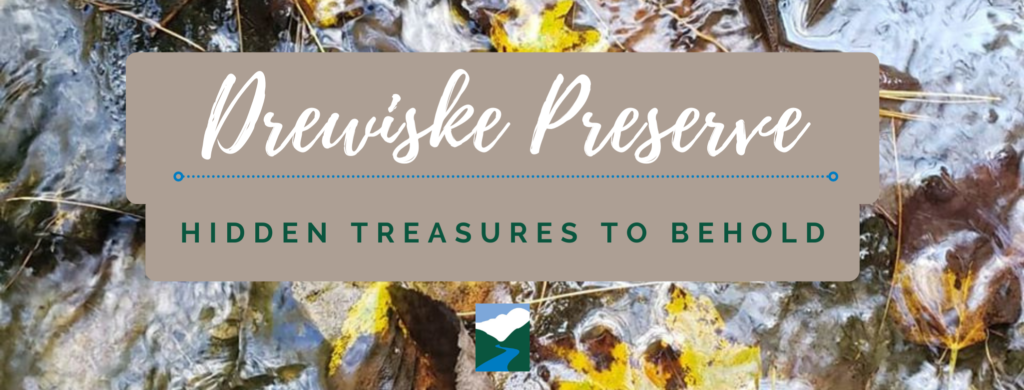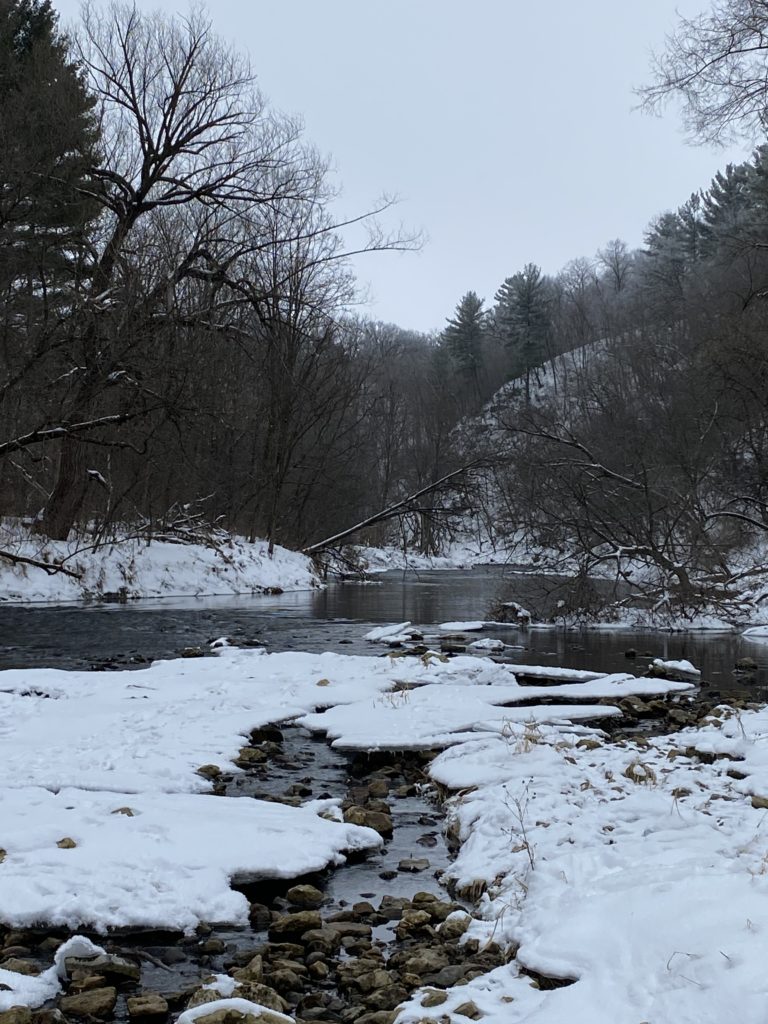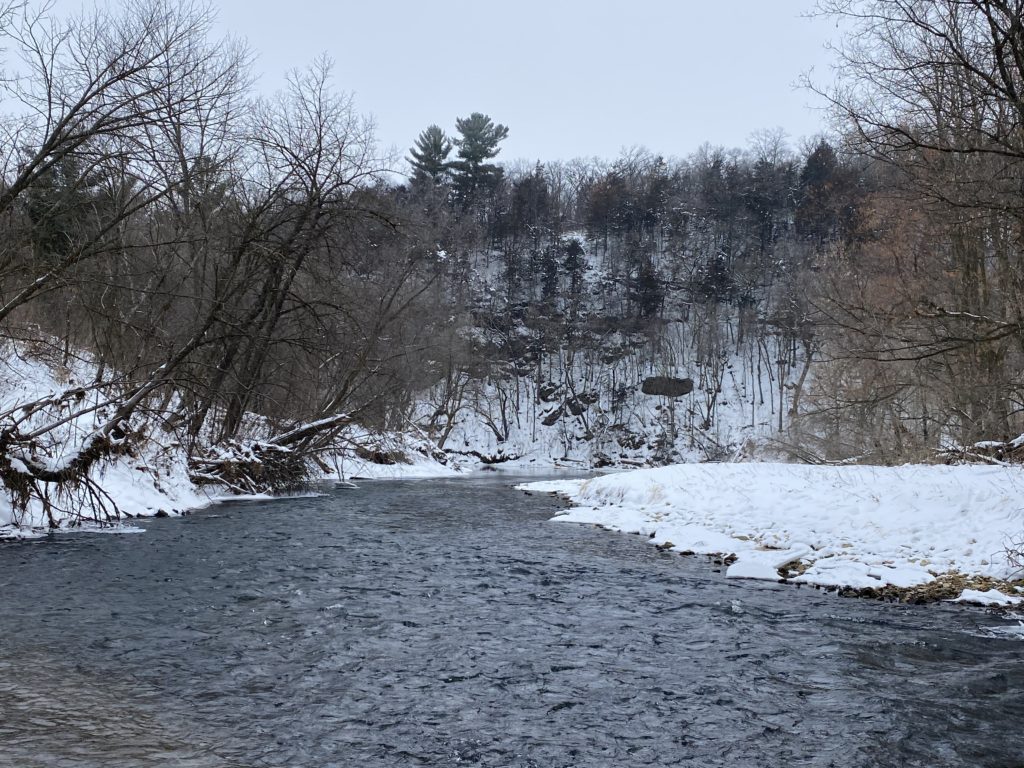

The landscape here may look barren, but right now the stream’s water is warmer than the air, and many of the trout’s prey species are still alive, sheltering in the streambed and under the rocks. If you turn over the rocks, you may find them. These include species like the larvae of caddisflies and mayflies, as well as snails and little shrimp-like crustaceans. In groundwater-fed streams such as the Kinni, trout will maintain a stable condition and may even grow over the winter months.

On the riverbanks, there are other treasures to behold. Seen here on the left is the brown fertile frond of an Ostrich Fern (Matteuccia struthiopteris). These fronds do not photosynthesize (create food using the sun’s light); their job is to protect the fern’s reproductive structures, called spores, during the winter months. In the inset, you can see how the edges are curled in, with the spores inside. The spores that survive the winter will germinate in the spring and grow into a new fern. In the picture on the right, you can see what the sterile fronds (the ones that photosynthesize) in the summer months look like.

In the upland forest, there is something interesting as well: a face on a twig! This twig belongs to a Prickly Ash (Zanthoxylum americanum) shrub. The “face” comes from scar tissue where the leaf fell off of the tree last fall. The “eyes” and “nose” are where the veins from the leaf connected to the tissue inside the twig. And the red “hair” is a bud that will grow into next year’s leaves. Different tree species have buds and leaf scars of different shapes and sizes, and this allows us to identify trees even in winter months, when the trees are dormant and only the twigs remain. Although, not all trees and shrubs have such charismatic features as Prickly Ash!
Monthly phenology reports about the Kinnickinnic River and watershed are brought to life by Stephanie Erlandson, a long time environmental educator, and plant ecologist.


